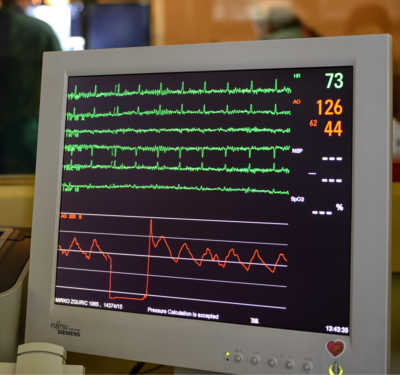Treating atrial fibrillation needs better mapping techniques
Reviewing studies on techniques used to map the electrical wave-sources of atrial fibrillation may help resolve debate over the causes of the condition.
Published online 29 February 2016

Atrial fibrillation results in irregular heart beats due to complex waves in the atria of the heart.
© Ivan Batinic / Alamy Stock Photo
Atrial fibrillation (AF) is a common disorder of the heart’s rhythm in which complex, disorganized waves in the top chambers of the heart cause sustained, irregular heart beats in its lower chambers. How these complex electrical waves originate is still poorly understood.
Researchers in the US and UK reviewed studies about techniques used to ‘map’ the sources of AF waves. Their review reveals that different mapping techniques produce different results.
Optical mapping involves the use of dyes that bind to cell membranes in the heart and fluoresce in direct proportion to voltage changes across the membranes. This technique is currently not used in patients because of the dyes’ toxicity. However, studies using this technique in animal hearts and in human hearts removed for transplantation show that AF arises from ‘rotors’: localized waves of electrical activity that spin around a centre.
Conventional electrocardiogram analysis, on the other hand, has historically shown a more chaotic and disorganized distribution of wave activity.
“Electrogram rules were developed for simple rhythms,” explains cardiologist Sanjiv Narayan from Stanford University in the US. “Although applied to AF, they are yet to be tested and validated for it. The topic is significant because, if there are AF sources, therapy should find and target them.”
Current therapies for atrial fibrillation involve ‘resetting’ the heart to its regular rhythm by electrical shock, which is short lived, or with medication (anti-arrhythmic drugs). If these do not work, a surgical procedure, known as ablation, can be conducted. During the surgery, heart tissue is destroyed by cauterization to remove sites thought to be producing the irregular waves. The amount of ablation done could vary widely depending on the mapping technique used.
A few recent studies show that widespread ablation does not improve the outcome when compared to standard ablation, says Narayan. Also, some studies using novel mapping approaches on human hearts have found rotors and AF sources — similar to those seen by optical mapping — where limited ablation can improve the efficacy of standard ablation. This further supports the hypothesis that AF is caused by localized sources.
Narayan and his team of researchers are working on developing computational methods to improve electrogram analysis and the mapping of atrial fibrillation waves. “Other future approaches could be to improve optical mapping or to develop novel tools or catheters that can map the heart in a minimally invasive procedure or during surgery,” he says.
Reference
- Zaman, J. A. B., Baykaner T., Schricker A. A., Krummen D. E. & Narayan, S.M. Mechanistic targets for the ablation of atrial fibrillation. Global Cardiol. Sci. Pract. 2015, 67 (2015). | article
DOI: 10.1038/qsh.2016.103

